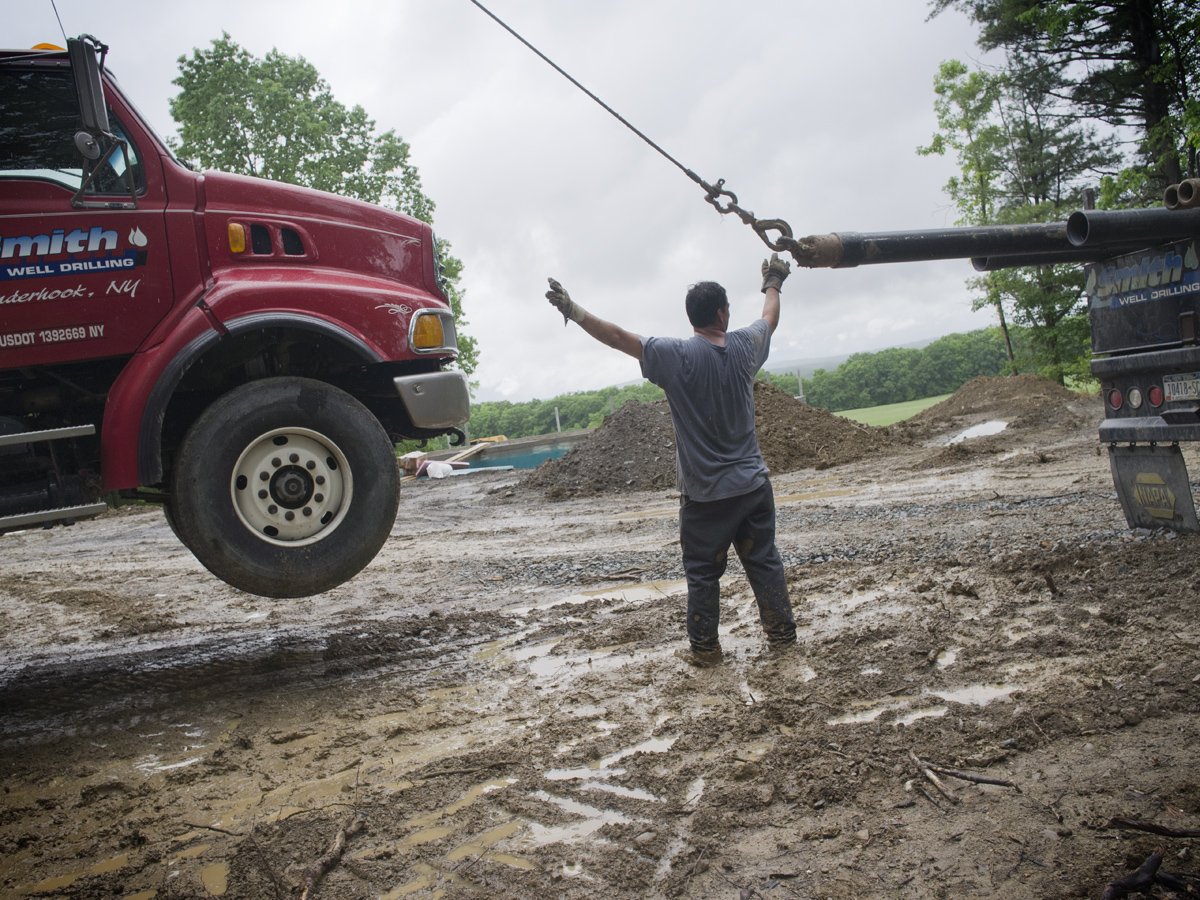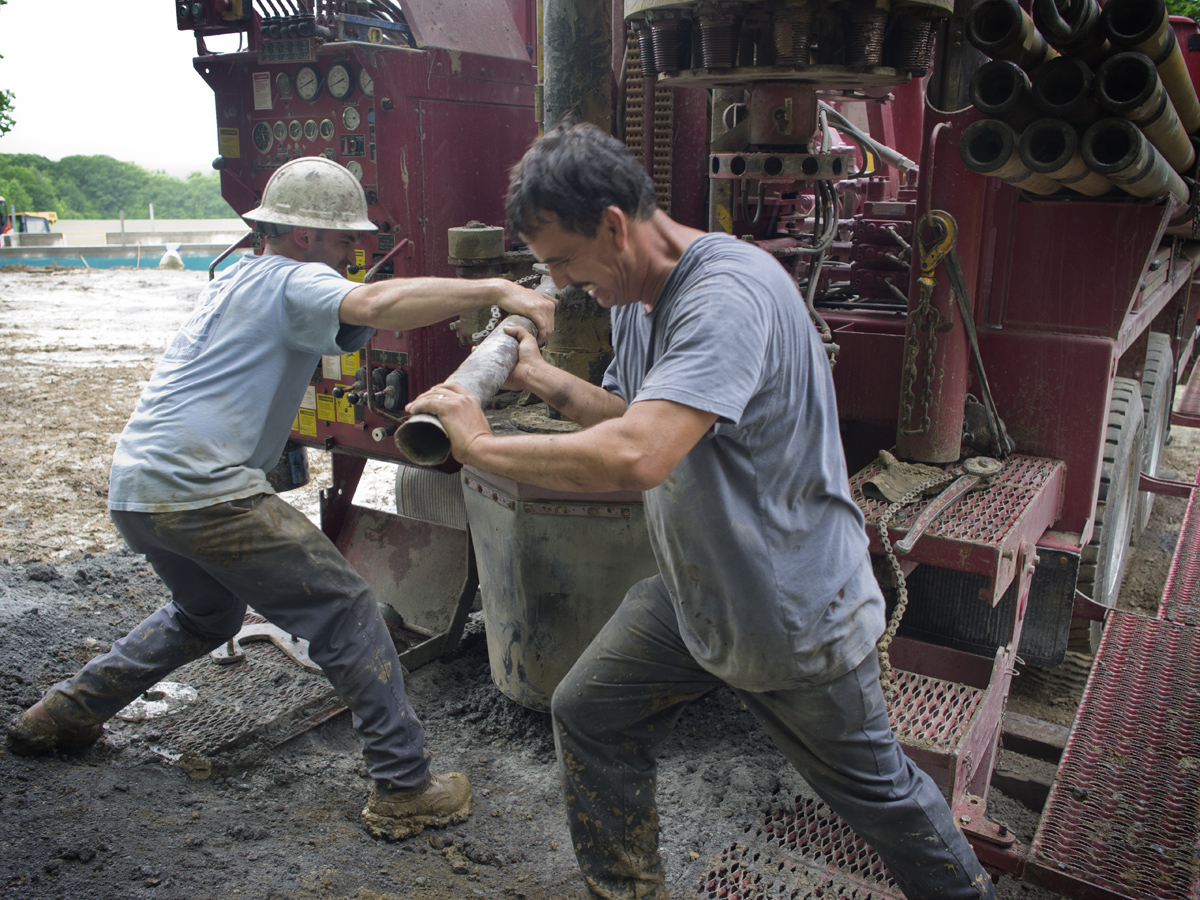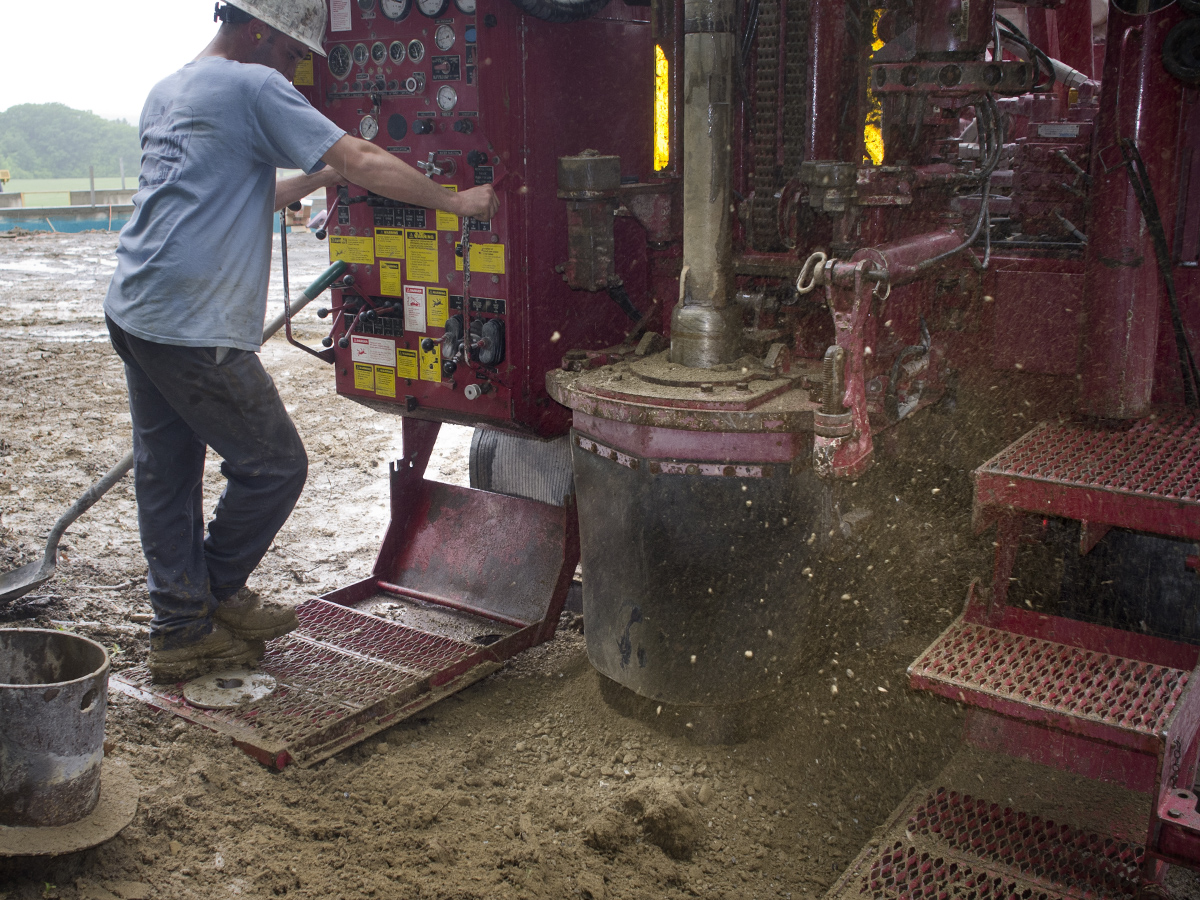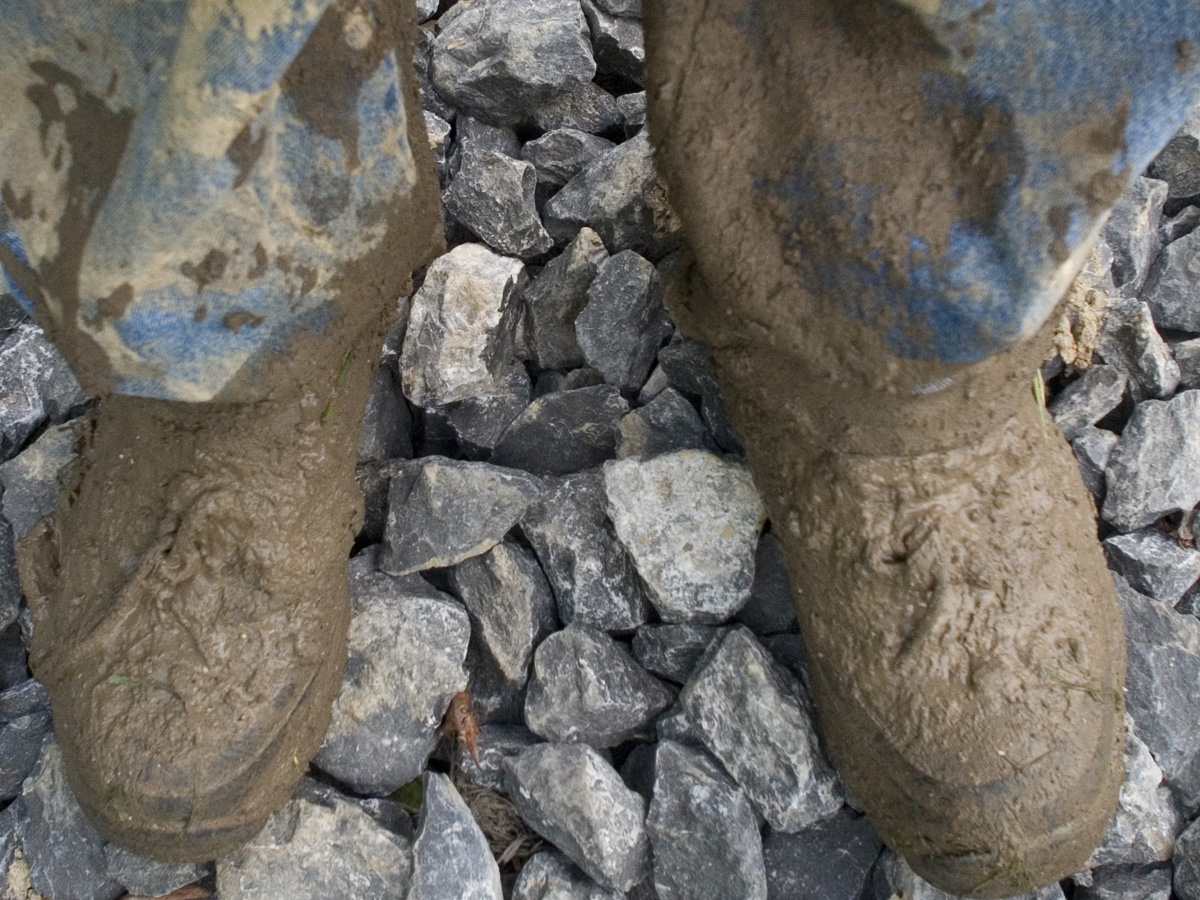Smith Well Drilling of Kinderhook, NY
 Unloading casing pipe in rain and mud
Unloading casing pipe in rain and mud Adding pipe sections during the decent of the drill
Adding pipe sections during the decent of the drill On the first day they installed casing pipe to to bedrock at 60 feet. Tomorrow they will drill for water.
On the first day they installed casing pipe to to bedrock at 60 feet. Tomorrow they will drill for water.

 “My muddy boots, my city shoes, I found the note I wrote to you.” My life sounds like a country song. I am on a train from Hudson to New York City, calling Chris on my cell phone. “I found Dad’s tractor directions in my papers. Got a pen? Slip the clutch on the power take off, use the big hole on the hook up, and don’t pound the auger,” I say, relaying my father’s tips to my husband, who was recently granted permission to drive the John Deere on his own. Chris is digging yet more holes for a septic system percolation test.
“My muddy boots, my city shoes, I found the note I wrote to you.” My life sounds like a country song. I am on a train from Hudson to New York City, calling Chris on my cell phone. “I found Dad’s tractor directions in my papers. Got a pen? Slip the clutch on the power take off, use the big hole on the hook up, and don’t pound the auger,” I say, relaying my father’s tips to my husband, who was recently granted permission to drive the John Deere on his own. Chris is digging yet more holes for a septic system percolation test.
We are mired in mud. The soil is saturated from a month of record rainfall, including Hurricane Irene. The first set of perc test pits failed to drain fast enough for us to bury a septic system in the field. The next option, far less attractive both visually and financially, is a raised bed. Columbia County said we can use 18” of the soil and add several feet of sand and gravel to create a big mound. An excavator tells us we can fill and grade and make it blend; an architect warns our hillside will never look natural again. Septic systems range from $8,000 to $35,000 and may or may not involve pumps, sprayers and alarms – including the most unattractive idea of a receptacle in the basement that grinds solids and pumps fluids up and out.
Today Chris will make a last-ditch effort to see if we can bury a system in an alternate location. I will attend meetings and eat lunch at a Japanese restaurant, so I have slipped on my pumps instead of my boots, now coated and cracking clumps of clay.